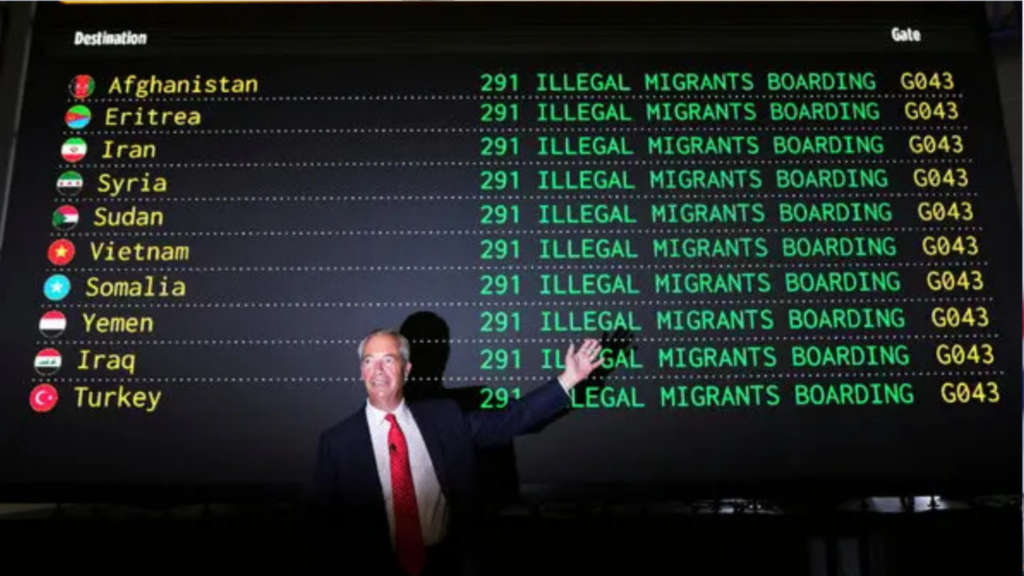The UK’s Thames Water Crisis
As Thames Water faces mounting debt and regulator resistance, the future of the UK’s privatised water sector hangs in the balance.
The UK’s largest water provider, Thames Water (TW), is closing in on renationalisation. Earlier in June, TW’s preferred partner KKR, an American private equity firm, created shockwaves as it walked away from a rescue deal that would have provided the struggling water provider £4 billion in much-needed emergency cash. In its stead, senior creditors have stepped up to offer a £17 billion deal that includes a cash injection and further writedowns on debt to ease the financial strain. But this deal comes with a cost.
Senior creditors want concessions from the economic regulator, Ofwat, before committing capital and writing off debt. These include protections for executives against the regulator’s new powers to prosecute environmental crimes, and forgiveness of fines for breaches of dividend payment rules and environmental damage. Ofwat, however, is refusing to budge.
The crisis at TW has become a flagship case for the largely privatised water sector. Public outcry has reached a tipping point following years of mismanagement that has forced the government and regulator to act. Under pressure to improve service quality and meet future demand, a radical shake-up of the industry is planned for the upcoming 2025-30 regulatory period and price review. A move that has shaken investor confidence as concerns grow about the level of political risk in the UK water sector.
In this tense moment, TW is under pressure to make a deal as key debt payments loom. With its finances in disarray, a default could be catastrophic for TW, and may see the company enter the Special Administration Regime (SAR), which is designed for insolvent companies that provide critical public services. It would be an unprecedented move that could seriously upset investment into the broader UK utilities market.
The purpose of this two-part article is to evaluate the credibility of a private sector rescue deal, what the market implications are of public ownership via the SAR, and what this means for UK political risk going forward. Beginning with the market-led solution, this piece will discuss the key elements of a private sector rescue before moving into the crux of the issue — Ofwat and the 2024 Price Review, and why this is a point of contention for TW investors and the broader UK water market, which has seen some large investors walk away from their investment altogether. This will set the ground for the implications of public ownership (i.e., the SAR) in the next piece, focusing on how it could impact investment into UK utilities, and why investors note the changing UK regulatory and operational environment as a key issue making Thames Water “uninvestable” (Ambrose, 2024).
The Price Review Problem
Every five years, Ofwat sets out the upcoming regulatory agenda that water companies must follow: the Asset Management Period (AMP). Embedded within the AMP is the price review; the most recent, and the focus of this discussion, is the 2024 Price Review (PR24). This is where Ofwat determines key economic components such as the amount water companies can charge their customers through bills, and how much of a return investors can make on their investment. The aim is to make sure customers pay fairly for their water services, that revenues fund new investment and not outstanding commitments, and that water companies can collect higher returns for good performance, creating an incentive to perform well and reinvest into their water infrastructure.
But the newest and eighth iteration of the AMP, or AMP8, has caused quite a stir. The UK must find five billion additional litres of water per day by 2050 to meet the needs of future demand (Ofwat, 2025). It is an enormous shortfall, just over a third of current market supply, that is being tackled in the upcoming AMP8, with a development pipeline of 30 major projects planned and a quadrupling of overall investment at a cost of £104 billion, the biggest upgrade the sector has ever seen.
The scale of the upgrade means water companies must make huge investments into their infrastructure, leading to dispute about the size of the financing needed to deliver on the agenda. In response, Ofwat revised its draft determinations in the final price review, or PR24, late last year to accommodate for the needs of the water companies, allowing the average customer bill to increase by 36% to £157 over the regulatory period, and increasing the rate of return for investors to 4.03%, up from 3.72% in the original proposal (Ofwat, 2024).
However, six water companies, including TW, have rejected Ofwat’s final determinations. Their case has been referred to the senior markets authority, the Competition and Markets Authority (CMA), which has until March 2026 to make their decision on the fate of the price review. But one of the six companies has chosen to delay their referral to the CMA: Thames Water. And with time against them, can TW afford to wait?
The Market Solution: Deal or No Deal?
TW requested an extension from the CMA in March this year. The company believes a rescue deal can be made within the extension window that avoids insolvency and special administration. Ofwat allowed the extension, giving TW 18 weeks to present a credible deal to recapitalise and restructure the ailing water provider. But there is no clear reason why the water provider should seek an extension, and why Ofwat should permit it. If the company presented a viable business plan to the regulator in the first place—which it claims (Thames Water Investor Group, 2025) — then there would be no need to delay its referral to the senior regulator. What this could suggest is that the company has either (i) potentially misled Ofwat on the viability of its AMP8 business plan, or (ii) that it seeks to force the hand of the regulator to get favourable concessions on a new deal, i.e., the senior creditor bid.
So far, regulating the water sector—a natural monopoly market with little to no competition, high fixed costs, and massive returns to scale, has proved challenging for the UK regulatory regime to properly manage. In fact, it could be considered “too big to fail,” or at least “too big to nationalise” in the TW case (Helm, 2025). Given TW’s track record, there is no guarantee that historic mismanagement would be rectified under private ownership. Now, the tenuous situation has reached an inflection point, as the current predicaments in UK public sector finances shrink the room for manoeuvre when the SAR might be needed most.
By allowing for historic mismanagement, public outcry has boiled over, and the government has been forced to act. Ofwat is flexing new powers that allow it to penalise water companies for not meeting their statutory duties (Ofwat, 2023); the first use of such powers on TW for payment fines breaches. These powers have now been extended under the new Water (Special Measures) Act 2025 made into law earlier this year (UK GOV, 2025), and signal a key turning point for the water sector as public pressure forces the government and regulator to come down harder on malpractice.
But for the senior creditor bid to go ahead, Ofwat must make further concessions on its price review. Ofwat remains firm, but whether it will capitulate to these demands is yet to be seen. In the meantime, preferred bidder status protects the senior creditors from hostile rival bids while Ofwat weighs a decision. This is because the privileged status means that only their bid will be considered by the regulator, despite other investors waiting to make their play. And since any new rescue package must include further writedowns on debt to make TW’s finances viable, as the preferred bidder, the senior creditors, or the Class A debtholders, can therefore shape a deal that protects their investment while potentially wiping out the other stakeholders, i.e., the junior creditors, or Class B debtholders.
Debt Distress and Thames Water Exits: Future Jeopardy
TW selecting the senior creditor bid comes as a major blow to the junior creditors, prompting bitter infighting among the investors over a deal (Smith, Plimmer, and Healy, 2024). Faced with debt distress and a challenging operating period ahead, internal disputes dampen investor confidence at a crucial time for the water company when it is attempting to secure a rescue deal and avoid special administration. TW is under pressure to secure a deal quickly. But given the scale of the problems, internal and external, some of the larger players have exited their positions altogether.
Canada’s Ontario Municipal Employees Retirement System (OMERS) pension fund called TW “uninvestable” and made a full writedown on its 31% stake (£990 million) in May 2024 (Ambrose, 2024). Following OMERS, the Abu Dhabi sovereign wealth fund (ADIA) wrote off its 9.9% stake, equivalent to £263mn, to £1 in October. This includes a full writedown on a £31 million loan to one of TW’s holding companies controlled by Kemble, the owner of TW (Plimmer, Pickard, and Healy, 2024). In June this year, another Canadian company, Export Development Canada (EDC), walked away with losses of around £350 million (Healy, 2025). Debt writedowns now total 41% of the external shareholder stake.
Investors balk at the idea of stronger regulation, but the setbacks hampering the water sector arise from both the regulator and water companies themselves. The TW crisis is indicative of Ofwat’s failure to regulate the sector properly, and of the company’s own failure to create a legitimate, sustainable long-term business plan. As an independent expert Eraj Weerasinghe (2024), notes, “Post-privatization, Thames Water focused on shareholder returns and managed its operations in a way that delayed long-term infrastructure investment. The company deferred necessary maintenance, which led to aging pipelines, higher leakages, and less efficient systems.”
Stopping the Leak
As we have seen so far, the new regulatory period comes with a huge investment burden, putting pressure on the government, the regulator, and the water companies to act: the UK must invest heavily in order to prevent a future water crisis. Having rebuked Ofwat’s PR24, six water companies now have their case in the hands of the CMA for a final review, with one exception: Thames Water. By delaying their referral, there is room to suggest the embattled water provider might be trying to game the regulator, or that it did not present a viable business plan in the first place. Meanwhile, infighting between TW investors only compounds the issue. And some large investors have made an exit, given the scale of upcoming changes to the sector.
As TW and the market await Ofwat’s verdict on the senior creditor deal, the market-led solution is in jeopardy as time and money run out for TW. As the chances grow for public ownership via special administration, so do investor concerns over the political risk in the water sector going forward.
In the second part of this two-part article, I will address the implications of public ownership via the SAR, and why it will be likely for TW in the mid-term, if not sooner. I will also discuss the broader regulatory regime and the key point of concern for investors over the Regulatory Asset Base (RAB), a bastion of UK regulation since wide-scale privatisation of the utilities market. From this analysis, we can then understand how the TW crisis represents the tip of an iceberg for the water sector and a broader indication of political risk in the UK.
Bibliography
- Ambrose, J. (2024) ‘Thames Water’s biggest investor cuts value of its stake to zero’, The Guardian, 17 May. Available at: https://www.theguardian.com/business/article/2024/may/17/thames-water-investor-cuts-value-stake-zero-omers (Accessed: 26 June 2025).
- Healy, E. (2025) ‘Canadian export agency hit by £350mn loss on loans to Thames Water’, Financial Times, 22 June. Available at: https://www.ft.com/content/418f65a2-5233-480e-935a-dbfcf289103f (Accessed: 26 June 2025).
- Helm, D. (2025) ‘Digging an ever-deeper hole – the next chapter in the Thames Water saga’, Dieter Helm, 24 April. Available at: https://dieterhelm.co.uk/publications/digging-an-ever-deeper-hole-the-next-chapter-in-the-thames-water-saga/ (Accessed: 9 July 2025).
- Ofwat (2023) ‘Ofwat announces new powers on water company dividends’, Ofwat, 20 March. Available at: https://www.ofwat.gov.uk/ofwat-announces-new-regulatory-controls-on-water-company-dividends/ (Accessed: 26 June 2025).
- Ofwat (2024) ‘Ofwat approves £104bn upgrade to accelerate delivery of cleaner rivers and seas and secure long-term drinking water supplies for customers’, Ofwat, 19 December. Available at: https://www.ofwat.gov.uk/ofwat-approves-104bn-upgrade-to-accelerate-delivery-of-cleaner-rivers-and-seas-and-secure-long-term-drinking-water-supplies-for-customers/ (Accessed: 24 June 2025).
- Ofwat (2025) ‘RAPID: securing customers’ future water supplies in AMP8’, Ofwat, 20 March. Available at: https://www.ofwat.gov.uk/rapid-securing-customers-future-water-supplies-in-amp8/ (Accessed: 3 July 2025).
- Plimmer, G., Pickard, J. and Healy, E. (2024) ‘Abu Dhabi writes off 9.9% stake in Thames Water’, Financial Times, 8 October. Available at: https://www.ft.com/content/6a86cacd-f0f6-484f-b820-1e10d5d2dc4a (Accessed: 25 June 2025).
- Smith, R., Plimmer, G. and Healy, E. (2024) ‘How Thames Water became a battleground for hedge funds’, Financial Times, 10 November. Available at: https://www.ft.com/content/508771ea-2d4f-420e-9631-4d9a1dcf8062 (Accessed: 26 June 2025).
- Thames Water Investor Group (2025) Summary on Water Sector PR24. GOV.UK. Available at: https://www.gov.uk/cma-cases/water-pr24-price-redeterminations (Accessed: 24 June 2025).
- HM Government (2025) Water (Special Measures) Act: policy statement. GOV.UK. Available at: https://www.gov.uk/government/publications/water-special-measures-bill-policy-statement/water-special-measures-bill-policy-statement (Accessed: 26 June 2025).
- Weerasinghe, E. (2024) TWUHL Independent Expert Report to the High Court of Justice by Eraj Weerasinghe. Independent Report. Kroll LLC. Available at: https://d2x23m05zp633u.cloudfront.net/Kroll_Valuation_Report_307a0ffba7.pdf (Accessed: 26 June 2025).



